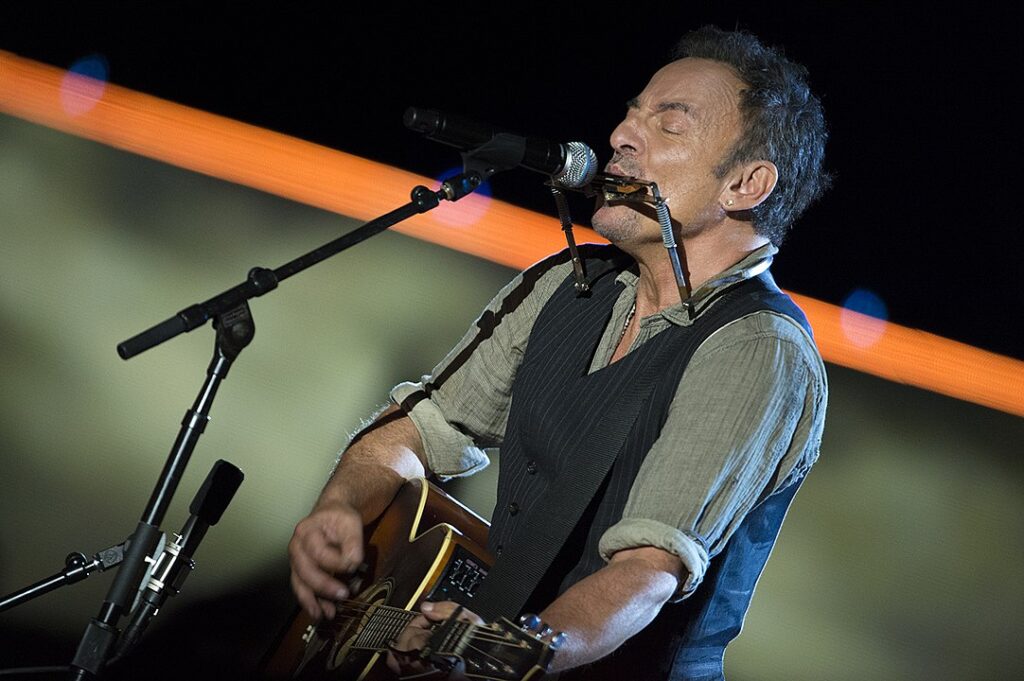Working class hero Bruce Springsteen, accompanied by the E Street Band, wrote and recorded The River in 1979. The song has an emotionally powerful harmonica intro and is the title track of Springsteen’s fithth studio album The River. Let’s dive – no pun intended – into the story and meaning of the song.
The Story of The River
The River tells the story of a man whose dreams get hit by the reality of life. The verses follow the narrative of reality and in the chorus “the river” represents the dreams.
The man meets his future-wife Mary in high school and together they drive to the river to dive into their dreams. Then Mary gets pregnant, and a cold “shotgun wedding” follows. Through it all the couple remains hopeful and still heads down to the river.
Economic difficulties, however, shatter the relationship between the man and Mary. Past recollections of love turn into haunting memories and existing dreams are crushed like never before. The man heads down to the river to receive a glimpse of hope, but deep down knows the river ran dry.

The Origin Behind The River
Before performing the song live for the first time Springsteen said the song was written about his brother-in-law and sister. This was later confirmed by Springsteen’s sister, Ginny Springsteen, in the biography Bruce. Although Ginny Springsteen was the inspiration for the song, The River depicts a universally recognizable story of dreams being interrupted by life’s reality. The representation of dreams through the river was inspired by Hank Williams’ Long Gone Lonesome Blues.
Working Class
The river, like many Springsteen songs, represents the life of the working class. In the song, Bruce delves into relationship issues as a result of economic difficulties and local culture.


The Song’s Legacy
The river wasn’t released as a single in the USA. Despite not being released as a single, The River received airplay and became a well-known song in Springsteen’s repertoire. The song was released as a single in some European countries and gave The River success on the European charts. The song is often played by Bruce Springsteen and the E street band during live shows, having it played over 600 times. The live performances are often accompanied by long intros and/or outros.
Interested in more stories behind Bruce Springsteen songs? Click here













